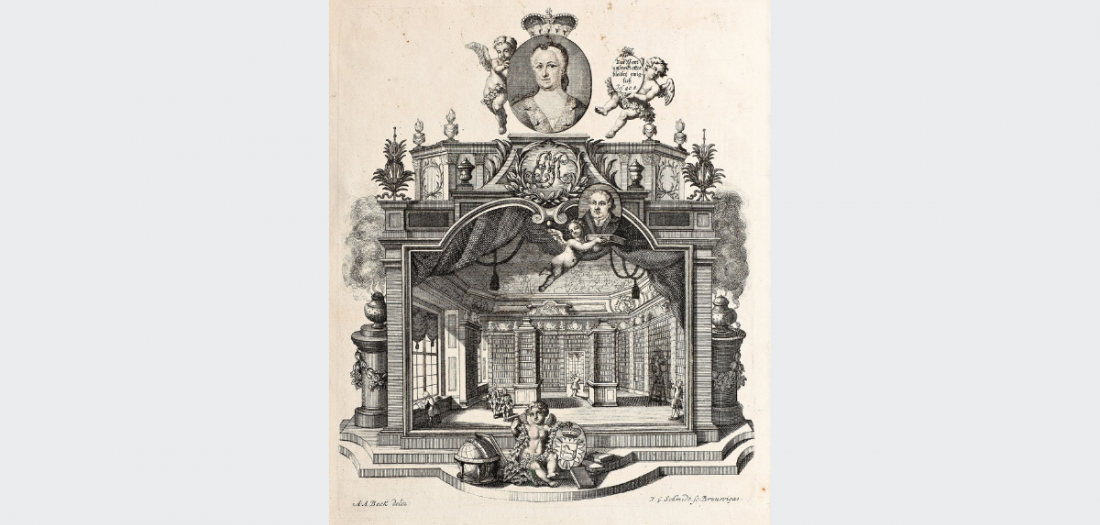What Did German Princesses Read in the 18th Century?
A new long-term project on 18th-century princesses' libraries in the German-speaking area has been approved by the DFG.
24.07.2024 | General, Press Releases, Project News

Idealdarstellung der Bibelsammlung von Elisabeth Sophie Marie von Braunschweig-Lüneburg, Johann Georg Schmidt, Brunswick, 1752 http://www.luthermania.de/buch/show/1184#page/6/mode/2up.
In recent years, libraries of princesses have increasingly attracted the attention of researchers, but a systematic examination of the collections, which are scattered throughout the German-speaking area, is still lacking. This project aims to address this gap by developing a digital platform to comprehensively reconstruct the book collections of princesses and enable a qualitative analysis of their book-related knowledge practices. The basis of the investigation comprises 99 libraries that have been identified in recent years. These libraries are documented in historical library and auction catalogs or other sources such as letters and diaries. In many cases, the original books can still be found in libraries today. A famous example is the Anna Amalia Library in Weimar, which houses the books of the eponymous princess. Through these volumes, reading traces such as underlining and notes can be discovered, allowing conclusions to be drawn about the reading behavior of the princesses.
To obtain comparable and meaningful data on the book ownership of princely women, the platform will link bibliographic information of the examined books with copy-specific information, such as provenance marks or reading traces, and biographical data into a knowledge graph. In this way, the intellectual and scholarly activities of these women will be made visible, revealing their substantial contribution to the knowledge society of the Enlightenment.
This project will make an innovative contribution to gender-specific knowledge history and digital collection research, which will be relevant to a wide range of other subfields of historical research.

